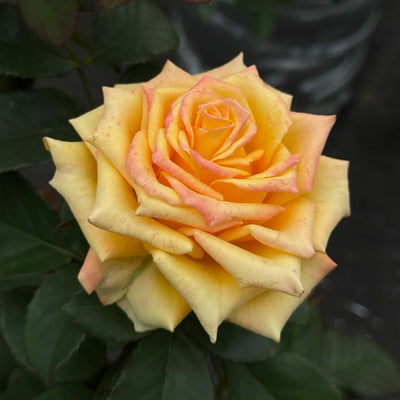Rose Explosion Guide: How to Prune Roses for Better Growth
Pruning roses may sound intimidating, but it’s one of the most important steps to ensure your roses thrive and bloom beautifully. Whether you’re growing shrub roses or climbing varieties, learning how to prune roses keeps them healthy, promotes growth, and enhances their appearance. If you’re unsure where to start, don’t worry—I’ve got you covered with this easy guide. Let’s dive into why, when, and how to prune roses.

Why Is Pruning Necessary?
Pruning isn’t just about keeping roses neat; it’s about encouraging them to grow better and bloom more. Roses are naturally vigorous, and if left unchecked, they can become large, tangled shrubs with weaker stems. Knowing how to properly prune roses helps shape the plant into a well-structured, beautiful bush.Additionally, pruning stimulates new growth and leads to more abundant flowers in the next blooming season. Think of it as giving your roses a fresh start before they burst into life again!
When Should You Prune Roses?
The best time to prune roses is in late winter or early spring, just as new buds start to appear. Depending on your location, this usually happens between February and April.Pruning earlier is possible, but it may be harder to identify unhealthy stems that need to be removed. Waiting until the buds swell makes it easier to see what needs trimming and ensures that your timing for how to prune roses is just right.
How to Prune Shrub Roses
Pruning shrub roses depends on their age and your goals for their size and shape.
First-Year Roses
For roses in their first year (after completing their first blooming season), only light pruning is needed. At this stage, the plant is focusing on establishing strong roots to support future growth.
Second-Year Roses
During the second year, the plant is still building its root system and hasn’t reached full maturity. Prune lightly, focusing on removing weak or crossing branches.
Third-Year Roses and Beyond
By the third year, your rose bush should be well-established. You now have more flexibility in how you shape it.
• To make the bush taller: Trim less than one-third of the plant.
• To maintain the current size: Trim about one-third of the height.
• To reduce the size: Trim half the plant or more. This won’t affect the number of blooms but will keep the bush more compact.
For roses in their fourth year and beyond, continue using the third-year pruning steps annually to keep them healthy and looking their best. Knowing when and how to prune roses regularly ensures they maintain their beauty year after year.
How to Prune Climbing Roses
Climbing roses require a bit of extra care since they need support to grow. These roses are often trained on:
1. Fixed Structures: Such as walls, fences, or buildings.
2. Decorative Structures: Like trellises, pergolas, or arches.
Key Tips for Climbing Roses
• Encourage strong growth: Focus on fostering vigorous shoots from the base of the plant.
• Train branches for maximum blooms: Spread the stems into a fan shape and position them horizontally or near-horizontal. This encourages new shoots to grow along the entire branch, resulting in more flowers.
Learning how to prune roses for climbing varieties ensures they thrive and produce vibrant blooms throughout the growing season.
Climbing Roses on Fixed Structures
If you’re training roses against a wall, it’s helpful to install horizontal metal wires before planting.
• Space the wires about 2 feet apart, starting close to the ground.
• Use the wires to tie and secure the branches as the rose grows.
• Initially, three wires will be enough, but as the rose grows taller, add more wires to provide additional support.
This simple setup not only helps with the structure but also makes it easier to prune roses as they grow.
General Pruning Tips for Success
• Always use clean, sharp pruning shears to avoid damaging the plant.
• Remove dead, diseased, or damaged branches first to maintain plant health.
• Cut at an angle just above an outward-facing bud to promote outward growth.
• Don’t panic if your rose looks sparse after pruning. New growth will quickly replace what you’ve trimmed away, and your plant will look better than ever in spring!
Pruning roses may seem like a lot of work, but with a little practice, it becomes second nature. Following these steps will not only keep your roses healthy but also reward you with a garden full of vibrant, beautiful blooms. So, whether you’re tending to shrub roses or climbing varieties, take the time to prune roses with care—they’ll thank you with their stunning display! 🌹
For more tips and tricks, visit the Rose Explosion website!
















































